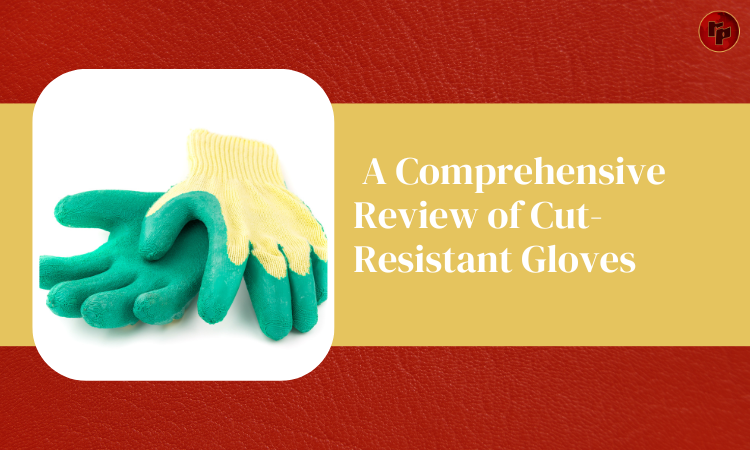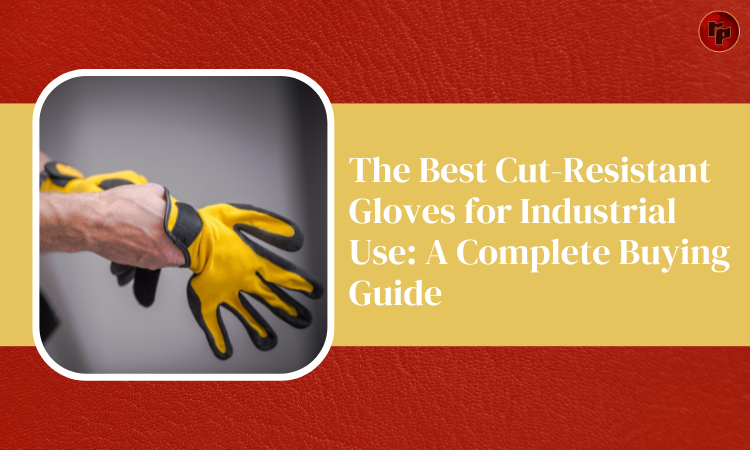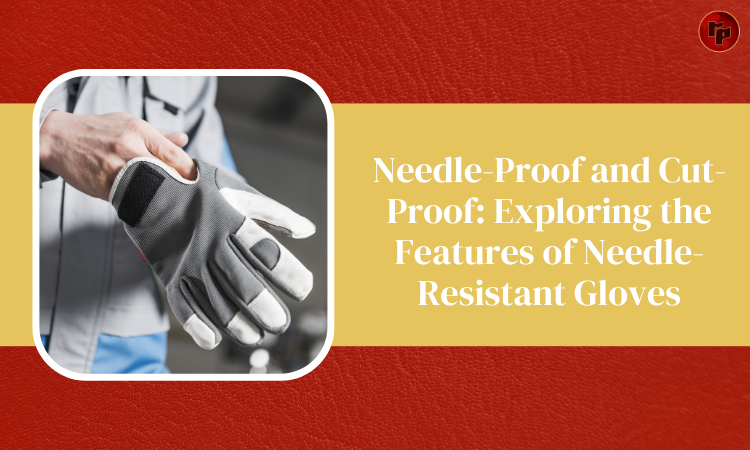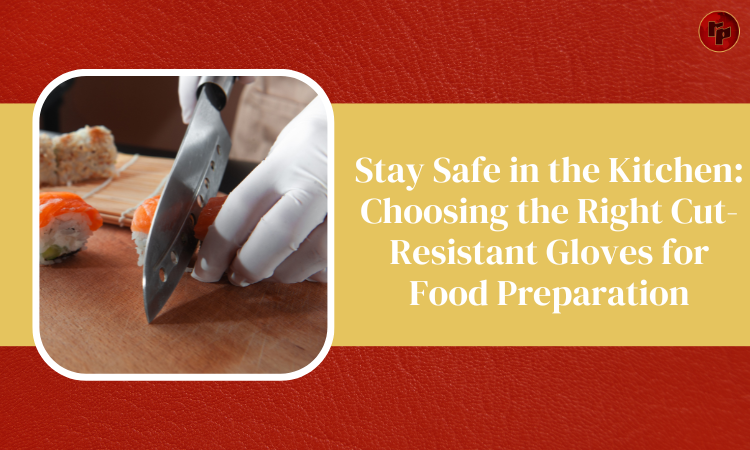Table of Contents
Introduction
Welcome to our comprehensive guide on cut-resistant gloves, where we will help you find the perfect pair that offers ultimate protection. Whether you are in the market for cut level 5 gloves for heavy-duty cutting tasks or needle-resistant gloves for healthcare professionals, or even cut level 3 gloves for light industrial work, we’ve got you covered. Let’s dive into the world of these essential safety accessories.
A Comprehensive Review of Protective Handwear: Which Ones Offer the Highest Level of Protection

Welcome to our comprehensive guide on cut-resistant gloves, where we will help you find the perfect pair that offers ultimate protection. Whether you are in the market for cut level 5 gloves for heavy-duty cutting tasks or needle-resistant gloves for healthcare professionals, or even cut level 3 gloves for light industrial work, we’ve got you covered. Let’s dive into the world of these essential safety accessories.
Cut Level 5 Gloves
Cut level 5 gloves are widely recognized for their exceptional cut resistance. These gloves are designed to withstand most severe cut hazards, making them ideal for that involve sharp objects, such glass or metal. high level of protection is achieved through materials, including fibers and reinforced stitching. Cut level 5 are a popular choice workers in industries such metalworking, automotive, and construction.
Needle-Resistant Gloves
In certain industries, such as healthcare or waste management, the risk of needlestick injuries is a real concern. Needle-resistant gloves provide an extra layer of protection by incorporating innovative materials and technology designed to prevent punctures from hypodermic needles or other sharp objects. While not as widely available as cut level 5 gloves, needle-resistant gloves are essential for professions where exposure to needles is common.
Cut Level 3 Gloves
Cut level 3 gloves strike a balance between protection and dexterity. These gloves are suitable for tasks that present a moderate risk of cuts, such as light assembly work or handling low-grade materials. Cut level 3 gloves offer an excellent compromise, providing adequate protection without sacrificing the ability to perform intricate tasks that require precision.

Cutting Through the Confusion: Understanding higher safety for Gloves
When it comes to selecting the right gloves for a specific job, understanding the cut level ratings is essential. Cut-resistant gloves play a crucial role in protecting workers’ hands from sharp objects, blades, and other potential hazards. But with so many different levels of cut resistance available, it’s easy to feel overwhelmed and confused. In this blog section, we will provide a clear explanation of cut level ratings to help you make an informed decision.
To begin with, cut level ratings are used to compare the performance of different gloves in terms of their ability to withstand cuts from sharp objects. The cut level scale ranges from 0 to 5, with 0 indicating no cut resistance and 5 offering the highest level of protection. The higher the cut level, the more resistant the gloves are to cuts.
For tasks requiring heavy-duty protection, such as handling glass or metal sheets, cut level 5 gloves are recommended. These gloves are designed with advanced materials like Kevlar, providing the utmost protection against sharp edges and blades. However, it’s important to note that these gloves may sacrifice dexterity and flexibility for increased cut resistance.
For lighter tasks that still pose some risk, such as construction or automotive work, cut level 3 gloves are a suitable choice. These gloves strike a balance between protection and dexterity, allowing for better maneuverability while still offering a decent level of cut resistance.
In addition to cut-resistant gloves, there are also specific gloves designed to withstand needle punctures. These needle-resistant gloves are especially important in industries where workers may encounter sharp medical instruments or needles, such as healthcare or waste management. These gloves are typically labeled accordingly and have their own unique set of standards and ratings.
It is essential to understand that cut level ratings are standardized and regulated by various industry organizations, such as ANSI (American National Standards Institute) or EN (European Norms). When selecting gloves, it is crucial to look for a reputable brand that meets or exceeds these standards to ensure reliable protection for workers.
Needle-Proof : Exploring the Features of Needle-Resistant Gloves
In high-risk work environments such as healthcare, law enforcement, and manufacturing, the safety of workers is of utmost importance. One of the most critical aspects of safety is hand protection, particularly when it comes to protecting against needlestick injuries and cuts. Needle-resistant gloves are specially designed to offer superior protection against punctures and cuts, ensuring the well-being of those who wear them.
Needle-resistant gloves are made from advanced materials that are specifically engineered to provide maximum protection. These gloves are often constructed using a combination of high-performance fibers like Kevlar, Spectra, and Dyneema. The strength and durability of these materials make them highly resistant to punctures from sharp objects, such as needles.
One important feature to look for in needle-resistant gloves is their cut-resistant capabilities. These gloves are often tested and rated according to the EN 388 standard, which measures their resistance to cuts. Gloves with a higher cut level, like cut level 5 gloves, offer the highest level of protection against lacerations and cuts. This is particularly important in professions where sharp tools or machinery are used regularly. However, it is important to note that needlestick protection does not necessarily correlate with the cut level of the gloves. For situations where needlestick protection is the primary concern, gloves with a cut level of 3 may be sufficient.
In addition to their protective features, needle-resistant gloves also offer superb dexterity and grip. This ensures that workers can perform tasks efficiently and securely without compromising safety. Many gloves also incorporate features like reinforced fingertips or padded palms to enhance both protection and comfort.
It is essential to choose the right size and fit when selecting needle-resistant gloves. Ill-fitting gloves can compromise dexterity and reduce the effectiveness of the protection they provide. Manufacturers often provide sizing charts and guidelines to help users find the perfect fit.
Investing in needle-resistant gloves is a proactive step in safeguarding workers against potential injuries. By prioritizing worker safety and providing the appropriate hand protection, employers can create a secure and productive work environment.


Stay Safe in the Kitchen: Choosing the Right Gloves for Food Preparation
Choosing the Best Gloves for Safe Food Preparation
When it comes to staying safe in the kitchen, protecting your hands should be a top priority. One essential tool to consider is a pair of cut-resistant gloves. These gloves not only offer an extra layer of protection but also provide peace of mind while handling sharp knives and other food preparation tools.
When selecting the right cut-resistant gloves, there are a few key factors to consider. First and foremost, look for gloves that have been tested and certified as cut-resistant. There are various levels of cut resistance, and the gloves should clearly state their cut level rating. Cut level 5 gloves provide the highest level of protection, suitable for tasks involving heavy-duty cutting and slicing. For general kitchen use, cut level 3 gloves are typically sufficient.
Another important consideration is the material of the gloves. Most cut-resistant gloves are made from high-performance fibers such as Kevlar or Dyneema, which offer excellent protection against cuts and abrasions. These materials also ensure flexibility and dexterity, allowing you to handle kitchen tools with precision and ease.
In addition to cut resistance, you may also want to consider gloves that are needle-resistant. This feature is particularly useful when working with sharp objects such as needles or small utensils like fishbones. Needle-resistant gloves provide an added layer of protection, minimizing the risk of accidental punctures.
When it comes to finding the right cut-resistant gloves, it’s essential to prioritize your safety without compromising on comfort. Look for gloves that are breathable, lightweight, and offer a snug fit. You should be able to wear them comfortably for extended periods without compromising your abilithttps://www.amazon.com/Needle-Resistant-Gloves/s?k=Needle+Resistant+Glovesy to perform intricate tasks.
Remember, investing in high-quality cut-resistant gloves is a small price to pay for the protection they provide. Whether you’re a professional chef or a passionate home cook, make sure to choose the right gloves to keep your hands safe while working in the kitchen.

Cut-Resistant Gloves for DIY Enthusiasts: Which Ones Can Handle Your Next Project?
When it comes to tackling DIY projects, one aspect that should never be overlooked is the safety of your hands. Whether you’re working with sharp tools, handling materials that pose a risk of cutting, or performing intricate tasks that require precision, investing in a pair of cut-resistant gloves is a smart move. These gloves not only provide protection but also give you peace of mind as you work on your next project.
When searching for the perfect pair of cut-resistant gloves, it’s important to understand the different cut levels and which one is suitable for your specific needs. Cut-resistant gloves are rated on a scale from 0 to 5, with 5 being the highest level of protection. For example, if you’re working with sharp objects such as glass or metal, you’ll want to look for gloves with a cut level 5 rating, providing the highest level of resistance.
If you’re dealing with smaller, more precise tasks that require dexterity, a pair of needle-resistant gloves with a cut level 3 rating might be more appropriate. These gloves offer adequate protection against common piercing hazards like needles, making them ideal for crafters or those in the medical field.
While it’s important to focus on the cut level, other factors come into play when selecting the right gloves. Consider the material and fit of the gloves to ensure maximum comfort and flexibility. Look for gloves made from high-quality materials such as Kevlar or Dyneema, known for their excellent cut resistance properties.
Some popular choices for DIY enthusiasts looking for cut-resistant gloves include gloves from brands like Mechanix, Ansell, and HexArmor. These brands offer a wide range of gloves that are durable, comfortable, and designed to provide the necessary protection for various projects.
Remember, investing in a high-quality pair of cut-resistant gloves is an investment in your safety. Don’t compromise when it comes to protecting your hands. Choose gloves that offer the right cut level and fit your requirements. It’s always better to be safe than sorry, especially when it comes to your hands. So, equip yourself with the right gloves and enjoy peace of mind while pursuing your DIY projects!
The Importance of Cut-Resistant Gloves in the Metalworking Industry: Our Top Picks
Cut-resistant gloves are a crucial safety measure for individuals working in the metalworking industry. The risk of cuts and abrasions is significant in this field, where sharp-edged materials, such as metal sheets, wires, and equipment, are often handled. Wearing the right pair of cut-resistant gloves not only protects the hands but also enhances productivity and reduces the likelihood of workplace accidents. In this blog section, we will explore the importance of cut-resistant gloves and highlight our top picks in the industry.
Cut level 5 gloves: Our first recommendation is the cut level 5 gloves, which offer the highest level of cut resistance. These gloves are designed to withstand severe cut hazards, such as those encountered when handling heavy-duty metal parts or operating powerful machinery. They provide excellent protection without compromising on dexterity, allowing workers to perform intricate tasks with ease and confidence.
Needle-resistant gloves: In addition to cuts, metalworkers often face the risk of puncture wounds from sharp objects, such as needles or metal shards. For this reason, needle-resistant gloves are an essential piece of protective gear. These gloves are engineered with specialized materials that can resist punctures, ensuring that workers remain safe from potential needle-related injuries.
Cut level 3 gloves: Our final recommendation is the cut level 3 gloves, which strike a balance between protection and dexterity. These gloves are suitable for tasks that involve moderate cut risks, such as handling metal components with sharp edges, operating power tools, or performing assembly work. The cut level 3 gloves provide reliable protection without sacrificing the precision required for intricate metalworking tasks.
When it comes to selecting the right cut-resistant gloves, it’s crucial to consider factors such as the nature of the job, the level of cut resistance required, and the dexterity needed to perform specific tasks. Additionally, choosing gloves certified by recognized safety organizations ensures that they meet industry standards.
Remember, investing in high-quality cut-resistant gloves is an investment in the safety and well-being of metalworkers. By providing adequate protection, these gloves contribute to a safer work environment, reduce the risk of injuries, and ultimately boost productivity.
At RP Comtrade, we understand the importance of cut-resistant gloves in the metalworking industry. That’s why we offer a range of top-rated gloves designed to meet the unique needs of metalworkers. Browse our selection today and equip yourself or your team with the best cut-resistant gloves available. Stay safe, stay protected!
Finding the Pair: Cut Level5 Gloves for Maximum Protection
When it comes to hand protection, there’s no compromising on safety. Whether you’re in the construction industry, a chef in a busy kitchen, or handling sharp objects in any other field, cut-resistant gloves are a must-have. But with so many options available on the market, finding the right pair can be a daunting task. In this blog section, we will delve into the world of cut level 5 gloves, their importance, and how they provide maximum protection.
Cut level 5 gloves are the highest level of cut resistance according to the ANSI/ISEA 105-2016 standard. These gloves are designed to withstand the most demanding tasks, protecting your hands from serious injuries. With their ultra-high cut resistance, they offer supreme protection against sharp edges, blades, and other potential hazards.
When choosing cut level 5 gloves, it’s essential to consider your specific needs. If you work in an industry where needle punctures are a concern, you might want to opt for needle-resistant gloves with a cut level 5 rating. These gloves combine cut resistance with specialized materials that provide an added layer of defense against punctures.
However, if your job doesn’t require the highest level of cut resistance, you can also look into gloves with lower cut levels. Cut level 3 gloves, for example, offer a balance between dexterity and protection, making them suitable for applications that involve moderate cut risks.
The key to finding the perfect pair of cut level 5 gloves lies in understanding your workplace hazards and the tasks at hand. Consider the materials used in the gloves, their grip capability, and any additional features that might enhance your safety.
Remember, when it comes to hand protection, there’s no room for compromise. Invest in a top-quality pair of cut level 5 gloves to ensure maximum protection for your hands. Your safety is paramount, and finding the right gloves will help you perform your tasks with confidence and peace of mind.
Cutting Edge in Safety: The Latest Innovations in Cut-Resistant Glove Technology
When it comes to workplace safety, protecting our hands from cuts and punctures is paramount. Thankfully, advancements in technology have led to the development of cutting-edge cut-resistant gloves that provide unprecedented levels of protection. In this blog section, we will delve into the latest innovations in cut-resistant glove technology, revolutionizing workplace safety across various industries.
1. Cut Level 5 Gloves: The Ultimate in Protection
One of the most significant advancements in cut-resistant gloves is the introduction of cut level 5 gloves. These gloves are constructed using high-performance materials such as Kevlar, Dyneema, or a combination of both, ensuring the highest level of protection against sharp objects and blades. Whether you work in the manufacturing, construction, or culinary industry, cut level 5 gloves are a game-changer in terms of safety.
2. Needle-Resistant Gloves: Shielding Against Punctures and Sharps
For professionals who face the risk of needle punctures, such as healthcare workers or waste management personnel, needle-resistant gloves are a godsend. These gloves are specifically designed to protect against hypodermic needles and other sharp medical instruments. Varying levels of needle resistance, often indicated by ANSI classifications, allow workers to choose gloves suitable for their specific environment.
3. Cut Level 3 Gloves: Perfect Balance of Dexterity and Protection
While the highest level of cut resistance is essential for some jobs, others require a balance between protection and dexterity. Cut level 3 gloves strike this balance, offering a high degree of resistance against moderate mechanical hazards without sacrificing flexibility. These gloves are ideal for industries that demand precision and fine motor skills, such as automotive assembly or electrical work.
From Cut Level 1 to Cut Level 5: Which Gloves Are Right for Your Specific Task?
When it comes to protecting your hands from cuts and injuries, not all gloves are created equal. With various levels of cut resistance available, it’s important to understand the different options so you can choose the right gloves for your specific task. In this guide, we will explore the different cut levels and highlight which gloves are best suited for each level.
Cut Level 1: These gloves offer basic protection against minimal cut hazards. They are suitable for tasks such as light assembly work or handling cardboard. Look for gloves with a thin, lightweight construction that allows for dexterity and flexibility.
Cut Level 3: Stepping up in cut resistance, gloves at this level are ideal for tasks involving moderate cut hazards. These gloves are commonly used in industries such as construction, automotive, and metalworking. They provide a good balance between protection and dexterity. Look for gloves with reinforced palms and fingers for added durability.
Cut Level 5: If you are working with heavy machinery, sharp tools, or in environments with high cut hazards, cut level 5 gloves are the way to go. These gloves offer the highest level of cut resistance available. They are typically made from materials like Kevlar or stainless steel mesh and provide exceptional protection. Remember, though, that increased protection often means reduced dexterity.
Needle-Resistant Gloves: In certain industries, such as healthcare or law enforcement, the risk of needlestick injuries is a concern. Needle-resistant gloves are designed to protect against puncture and needlestick hazards. Look for gloves specifically labeled as needle-resistant and ensure they meet industry standards.
While it’s important to consider the level of cut resistance when selecting gloves, other factors such as comfort, fit, and grip should not be overlooked. The gloves should fit snugly and offer a good grip to prevent slipping.
Conclusion:
Finding the perfect pair of cut-resistant gloves is essential for ensuring maximum safety in various tasks. Whether you’re looking for cut level 5 gloves, needle-resistant gloves, or cut level 3 gloves, this ultimate guide provides valuable insights and recommendations. Remember, investing in high-quality and properly fitting gloves will greatly minimize the risk of hand injuries. Stay protected and equipped with the right pair of gloves for any cutting job.
